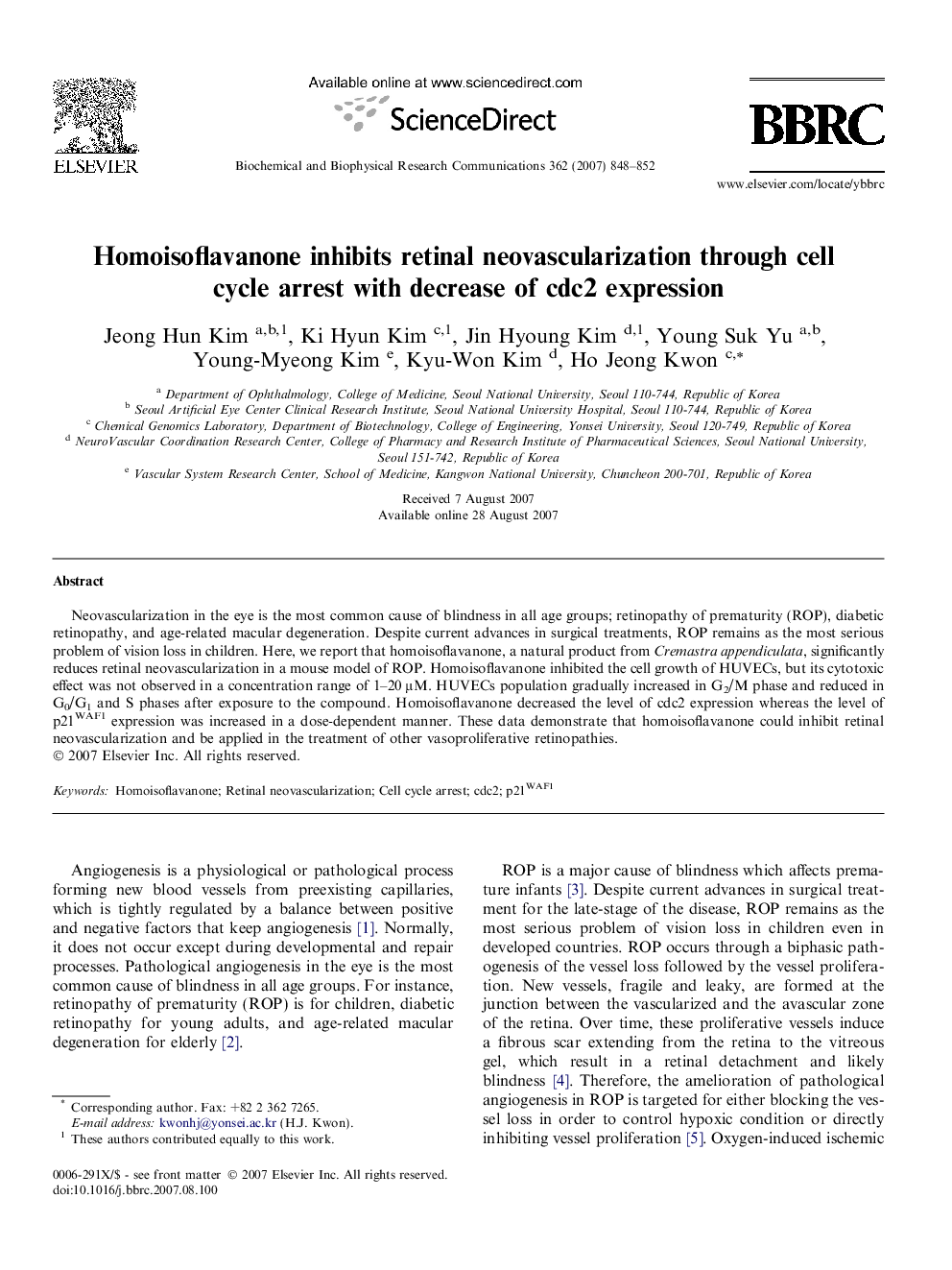| Article ID | Journal | Published Year | Pages | File Type |
|---|---|---|---|---|
| 1936334 | Biochemical and Biophysical Research Communications | 2007 | 5 Pages |
Neovascularization in the eye is the most common cause of blindness in all age groups; retinopathy of prematurity (ROP), diabetic retinopathy, and age-related macular degeneration. Despite current advances in surgical treatments, ROP remains as the most serious problem of vision loss in children. Here, we report that homoisoflavanone, a natural product from Cremastra appendiculata, significantly reduces retinal neovascularization in a mouse model of ROP. Homoisoflavanone inhibited the cell growth of HUVECs, but its cytotoxic effect was not observed in a concentration range of 1–20 μM. HUVECs population gradually increased in G2/M phase and reduced in G0/G1 and S phases after exposure to the compound. Homoisoflavanone decreased the level of cdc2 expression whereas the level of p21WAF1 expression was increased in a dose-dependent manner. These data demonstrate that homoisoflavanone could inhibit retinal neovascularization and be applied in the treatment of other vasoproliferative retinopathies.
